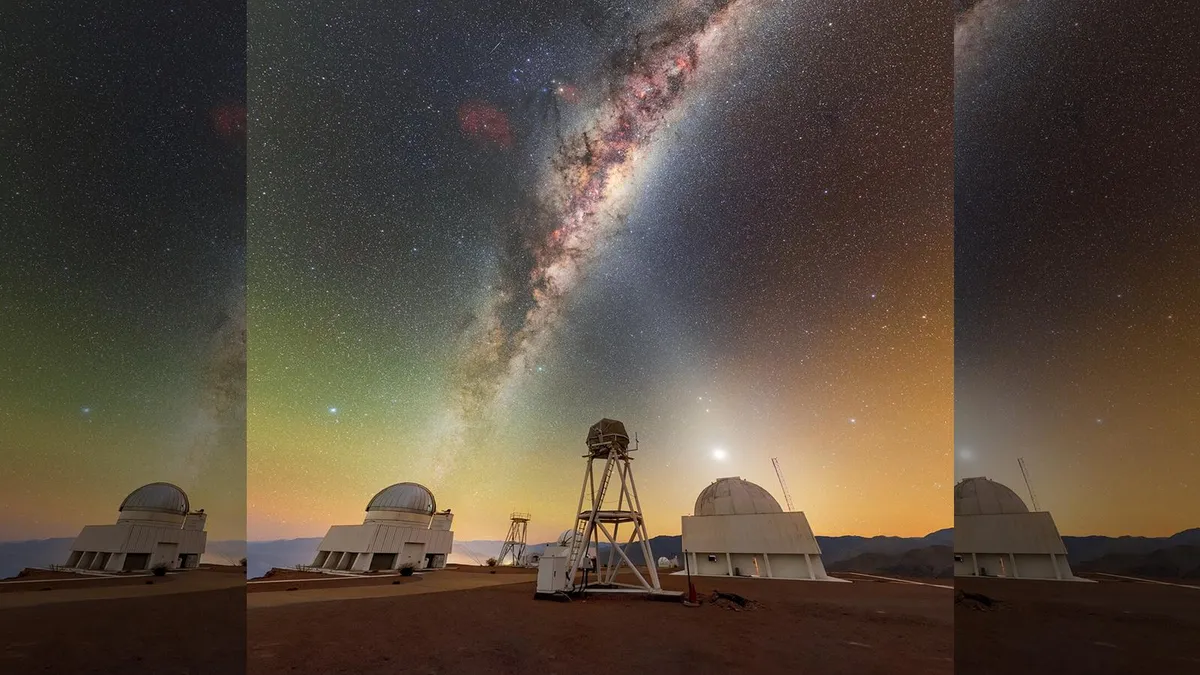
Astrophotographer Petr Horálek has masterfully captured a breathtaking image showcasing two of the night sky's most remarkable phenomena: the radiant heart of the Milky Way and the elusive zodiacal light. Although these two luminous streaks appear together in the night sky, their origins and compositions are strikingly different, providing a unique glimpse into the wonders of our universe.
The core of the Milky Way is a dense region teeming with stars and nebulae, making it a prime target for astronomers. To study this breathtaking part of our galaxy, scientists have built some of the most advanced telescopes in the Southern Hemisphere. The core traverses various constellations, including Scorpius, Sagittarius, and Ophiuchus. Notably, these constellations appear higher in the sky the farther south you observe from, enhancing the visibility of this cosmic marvel.
This stunning image was captured at the Cerro Tololo Inter-American Observatory (CTIO), which sits at an impressive altitude of 7,200 feet (2,200 meters) in the breathtaking Chilean Andes within the southern Atacama Desert. At this elevation, astronomers benefit from incredibly clear and dark skies, free from the dense and warm layers of Earth's atmosphere. This optimal viewing condition allows observers to not only appreciate the luminous band of the Milky Way but also to spot something more subtle: the zodiacal light.
Zodiacal light is the largest visible phenomenon in our solar system, yet it remains a mystery to many casual stargazers. This faint, diffuse glow often goes unnoticed and is caused by sunlight reflecting off cosmic dust in our neighborhood, which could originate from passing asteroids, comets, or remnants from the formation of planets. A study in 2020 suggested that much of the zodiacal light may consist of dust particles blown off of Mars itself. Regardless of its source, this celestial glow presents a captivating sight, albeit one that can be challenging to observe.
The best times to catch a glimpse of zodiacal light are around the equinoxes. It becomes most visible along the ecliptic—the apparent path that the sun takes through the sky—appearing as a triangular beam of light on the horizon during the hours just before sunrise or after sunset. This phenomenon has earned the nickname "false dawn" or "false dusk," reflecting its timing and the fact that it can be seen over the 13 constellations that comprise the zodiac.
Petr Horálek's remarkable photograph was taken in 2022 while he served as an audiovisual ambassador for NOIRLab, the organization that operates CTIO. The image features several notable telescopes and instruments from left to right: the U.S. Naval Observatory Deep South Telescope, the DIMM1 Seeing Monitor, the Chilean Automatic Supernova Search dome, the UBC Southern Observatory, and the Planetary Defense 1.0-meter Telescope. Each of these instruments plays a vital role in advancing our understanding of the cosmos.
In conclusion, Horálek's stunning capture not only highlights the beauty of the Milky Way and zodiacal light but also emphasizes the importance of advanced astronomical observatories in enhancing our knowledge of the universe. Whether you're an astronomy enthusiast or a casual observer, these celestial phenomena offer a glimpse into the vast and mysterious cosmos we inhabit.